 Invented by mathematician John Conway, Conway's Game of Life (hereafter, Life for short)
is a simulation game - a game that tries to resemble real life processes.
Invented by mathematician John Conway, Conway's Game of Life (hereafter, Life for short)
is a simulation game - a game that tries to resemble real life processes.
| 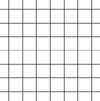 |
 Each cell (square) in the grid can be in one of two possible states:
Alive or Dead. A living state is usually indicated by a colored
square; a dead state by a blank square.
Each cell (square) in the grid can be in one of two possible states:
Alive or Dead. A living state is usually indicated by a colored
square; a dead state by a blank square.
 Each square is adjacent to eight others. These eight squares surrounding the square
in question are referred to as its neighbors.
Each square is adjacent to eight others. These eight squares surrounding the square
in question are referred to as its neighbors.
 Every simulation begins with a set of live cells. This is referred to as the
initial population. (Technically, you could begin with all cells being
dead, but that would make for a dull simulation.)
Every simulation begins with a set of live cells. This is referred to as the
initial population. (Technically, you could begin with all cells being
dead, but that would make for a dull simulation.)
 Then, the pattern evolves according to a certain set of rules.
The set of rules determines what
happens to each cell from one generation (configuration of
live and dead cells) to the next.
Then, the pattern evolves according to a certain set of rules.
The set of rules determines what
happens to each cell from one generation (configuration of
live and dead cells) to the next.
 The Rules:
The Rules:
Number of live neighbors |
State of cell in next generation |
0 or 1 | Dead (death by isolation) |
2 | Remains stable |
3 | Alive (referred to as a birth) |
4 or more | Dead (death by overcrowding) |
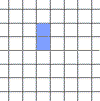
The next generation consists of...

...all dead cells. Why? Neither of the two live cells survived because each only had one neighbor. They died from isolation. No births took place because there were only two cells.
So now, we'll try a slightly more interesting initial population and see what happens:
 |
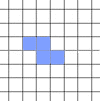 |
 |
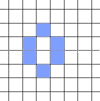 |
But after the fourth generation, nothing seems to change. This is because it has evolved into a stable pattern. Each live cell has exactly two neighbors and remains stable. No cell has exactly three neighbors, so there are no births. And so this pattern remains just as it is. This final configuration is referred to as a still life (as is any pattern which remains stable. This particular still life is called the beehive.)
Here is a different initial population, and its evolution:
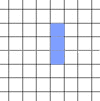 |
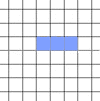 |
 |
After two generations, this pattern repeats itself. It will continue to switch back and forth between these two patters for all time. This type of pattern is called an oscillator with period two, because it has two different states. Other oscillators exist with different periods. (This particular oscillator is called the blinker.)
Now, one final pattern:
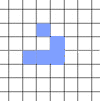 |
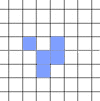 |
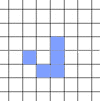 |
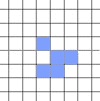 |
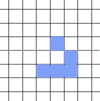 |
This pattern does repeat itself, but it is not a blinker, because it has also translated itself. This pattern is called a glider. There are also a number of more complex patterns that translate themselves, and they are called spaceships, and they come in Lightweight, Middleweight, and Heavyweight varieties.
These are only a few basic types of patterns. More complex ones exist, such as the Glider Gun, which will produce a steady stream of gliders forever.
Initial Population:
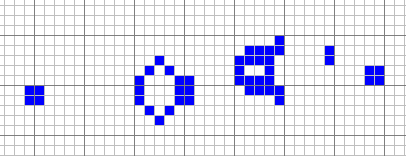
Quite a few generations later...

This is just meant as an introduction to Life. The real enjoyment comes from running your own simulations. The Math Links page contains links to online Life simulators and pattern catalogs, as well as links to web sites with programs you can download to run Life simulations on your own computer.
You will find that Life can have some unexpected results. For example, try seeing what happens when your initial population is the f-Pentomino.
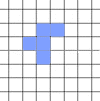
Enjoy!